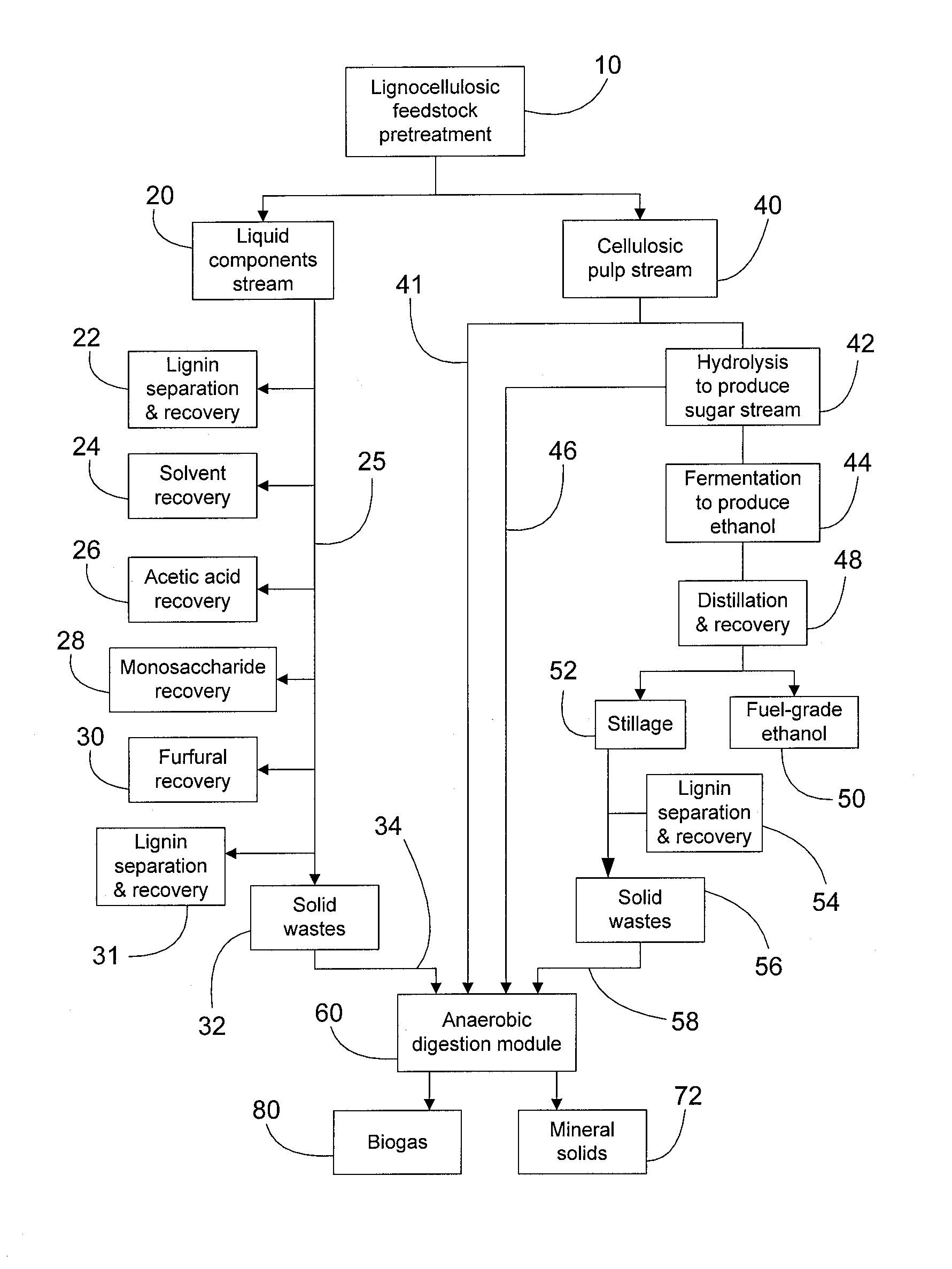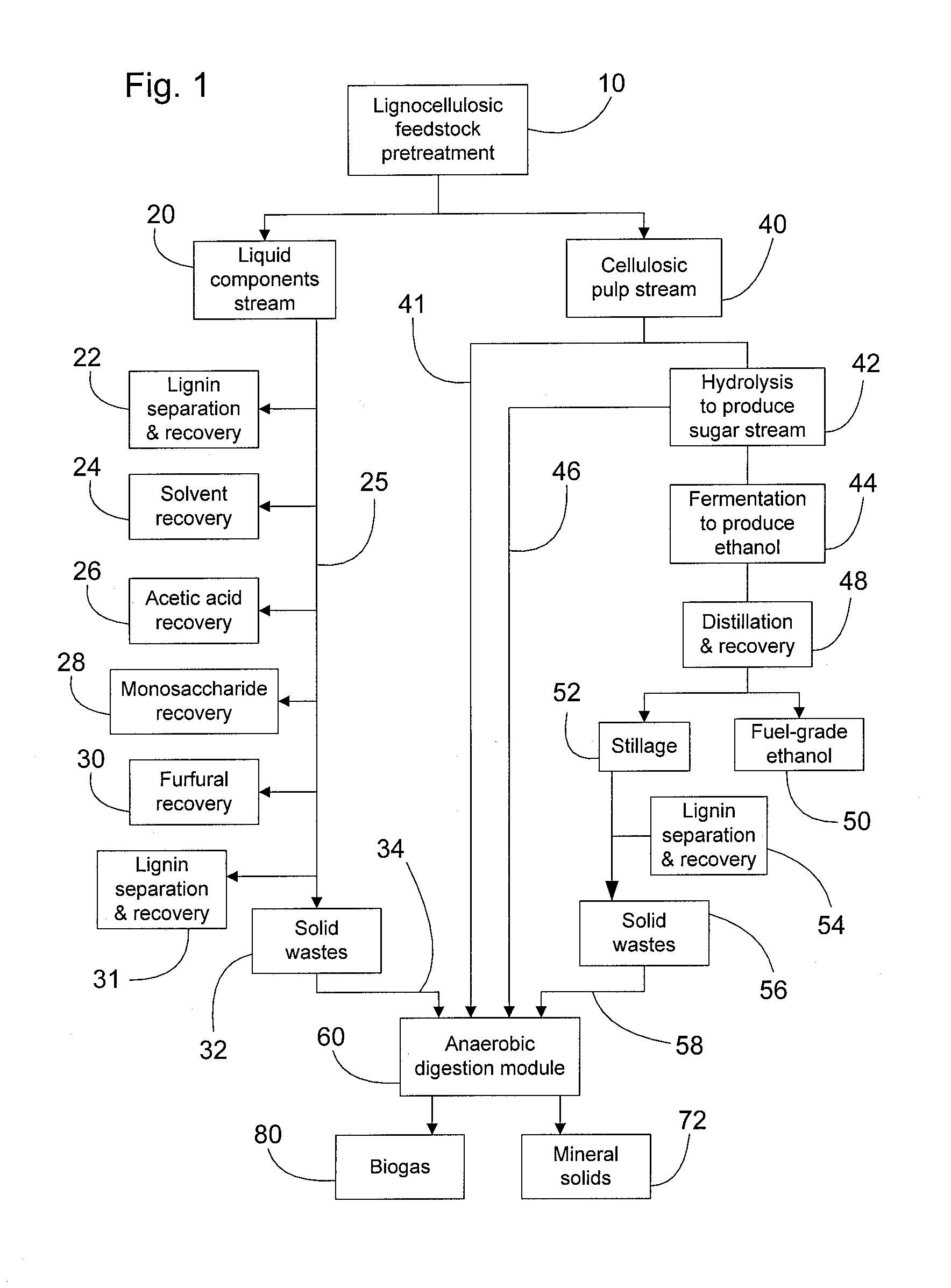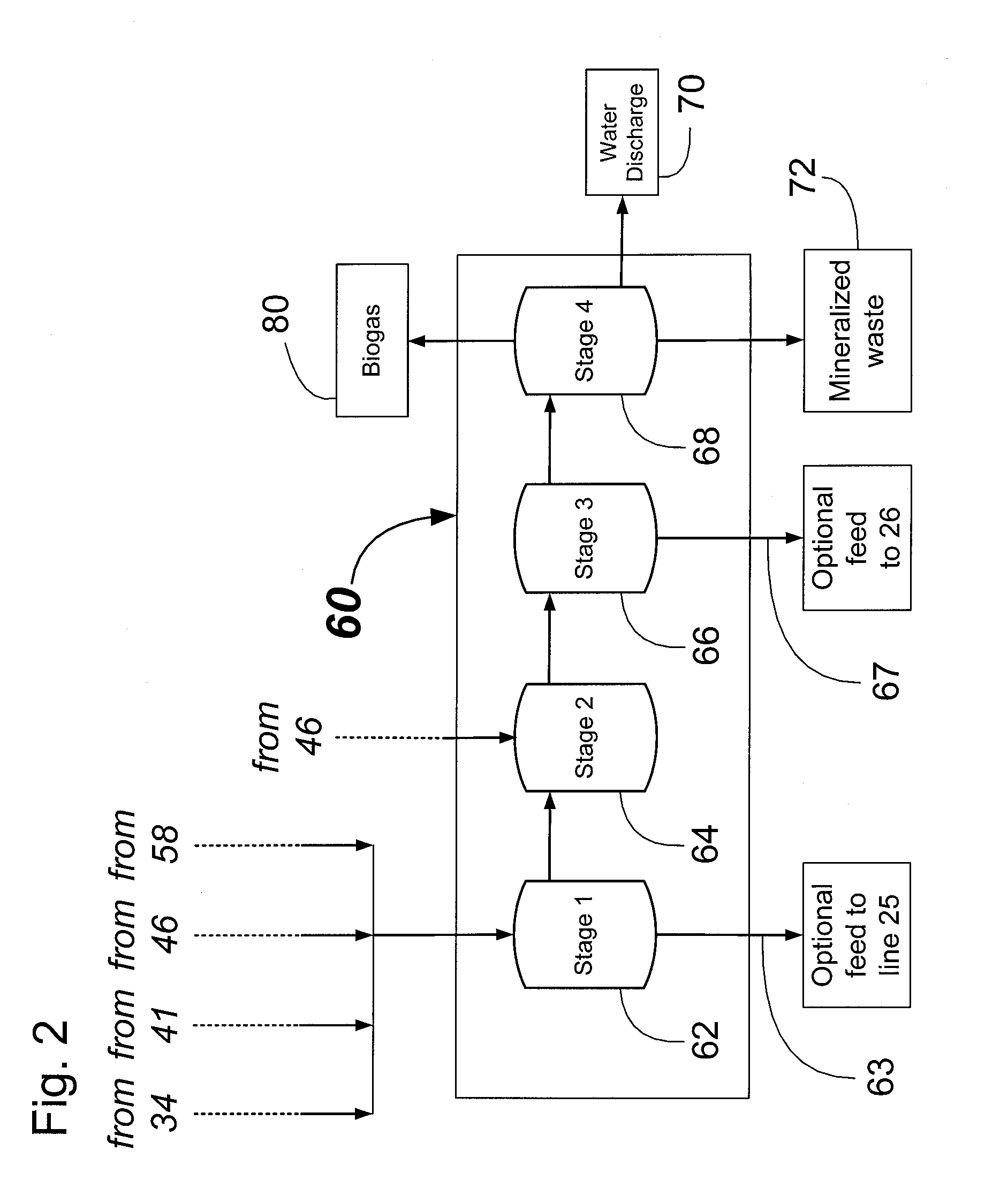Concurrent Anaerobic Digestion and Fermentation of Lignocellulosic Feedstocks
a technology of lignocellulosic feedstock and anaerobic digestion, which is applied in the direction of biochemistry equipment and processes, biochemistry apparatus and processes, water/sludge/sewage treatment, etc., can solve the problems of long digestion time, further delay or inhibition of biological processes, and lack of access to appropriate and acclimation
- Summary
- Abstract
- Description
- Claims
- Application Information
AI Technical Summary
Problems solved by technology
Method used
Image
Examples
Embodiment Construction
[0015]Exemplary embodiments of the present invention are directed to processes, systems and equipment configured for separating lignocellulosic feedstocks into multiple output streams. At least one stream produced is a liquid stream comprising solubilised extractives comprising at least lignins and lignin-derived polymers, hemicelluloses, polysaccharides, oligosaccharides furfurals and phenolic compounds, At least one other stream produced is a solids stream comprising cellulosic pulps. Suitable lignocellulosic feedstocks are exemplified by angiosperm fibrous biomass, gymnosperm fibrous biomass, field crop fibrous biomass, waste paper and wood materials, the like, and mixtures thereof.
[0016]Suitable processes and processing systems for separating lignocellulosic feedstocks into liquid streams comprising lignins, saccharides, oligosaccharides and polysaccharides, and solids streams comprising cellulosic pulps, are exemplified by biorefining, thermochemical and / or chemical and / or enzy...
PUM
| Property | Measurement | Unit |
|---|---|---|
| concentrations | aaaaa | aaaaa |
| volatile | aaaaa | aaaaa |
| temperatures | aaaaa | aaaaa |
Abstract
Description
Claims
Application Information
 Login to View More
Login to View More - R&D
- Intellectual Property
- Life Sciences
- Materials
- Tech Scout
- Unparalleled Data Quality
- Higher Quality Content
- 60% Fewer Hallucinations
Browse by: Latest US Patents, China's latest patents, Technical Efficacy Thesaurus, Application Domain, Technology Topic, Popular Technical Reports.
© 2025 PatSnap. All rights reserved.Legal|Privacy policy|Modern Slavery Act Transparency Statement|Sitemap|About US| Contact US: help@patsnap.com



